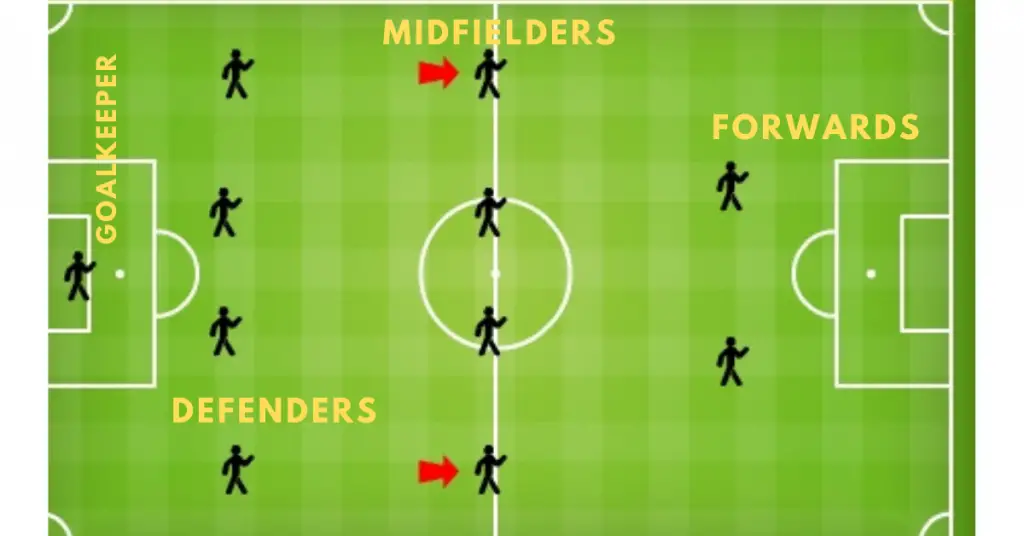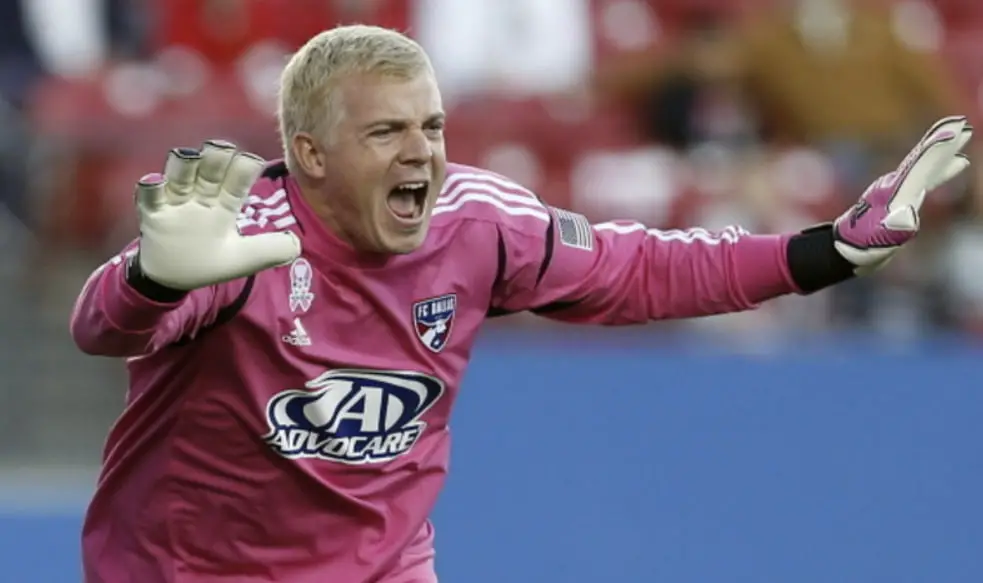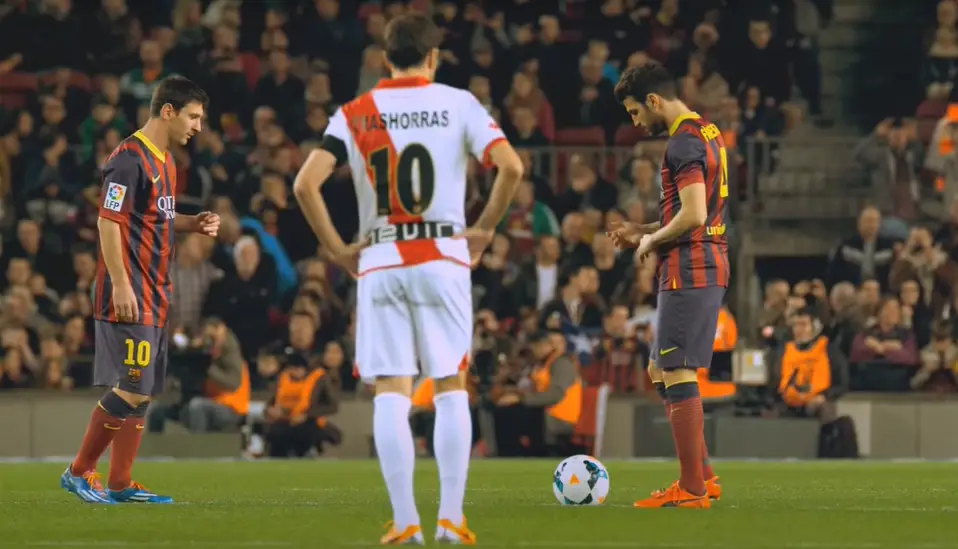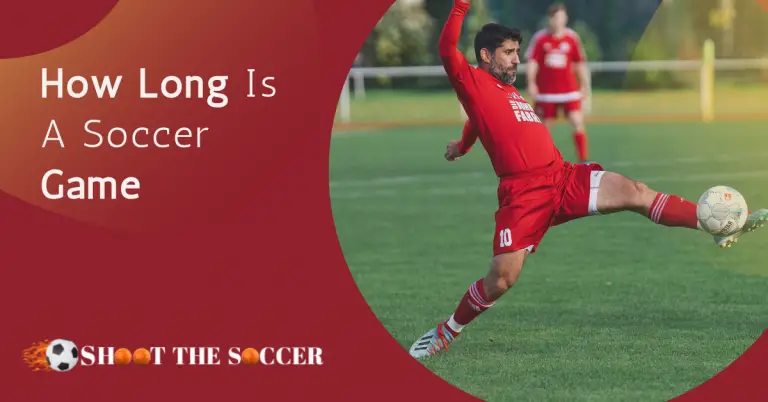How Many Players Are On A Soccer Team? (Youth, High School and Roster)
Football is a globally popular sport that garners widespread participation and appreciation. Its existence dates back centuries, with historical records documenting its play across multiple nations. While each culture boasts its unique interpretation of the game, a universal theme prevails: two opposing teams endeavoring to propel their ball into the adversary’s goal.

The regulations governing soccer often prompt deliberations among players, coaches, and soccer enthusiasts. One of the most frequently asked questions is, “How many players are on a soccer team?”
How Many Players are on a Soccer Team Including Substitutes?
A soccer team on the field has 11 players at the same time, which include one goalkeeper, four defenders, three midfielders, and three forwards. This is called the standard formation. However, the number of players on a team can vary depending on the coach’s strategy and team requirements. When substitutes are allowed, a team can have up to three additional players on the field during professional matches according to the rules and regulations. So, the total number of players on a soccer team, including substitutes, can be up to 14.
| Level of Play | Number of Players on a Soccer Team |
|---|---|
| Youth Recreational | 7-11 |
| Youth Competitive | 11 |
| High School | 11 |
| College | 11 |
| Professional | 11 |
Let’s Have a Look at the Position of Players in a Soccer Team
As we have mentioned above, the soccer team is made up of eleven players who have unique roles to fulfill on the pitch. A player can play in different positions, but he has the main position. Normally those playing as strikers are tall, and those playing as defenders are fast, with good stamina and strength. Those playing as midfielders tend to be a combination of all these factors.
What are the eleven positions in soccer?
In soccer, there are 11 positions on the field: one goalkeeper, four defenders, three midfielders, and three forwards.

1. Goalkeeper
The role of a goalkeeper in soccer is not the easiest task. It requires a particular set of skills to ensure that he can defend his team from scoring during the whole game. A soccer goalkeeper has to be able to have very quick reactions since he has to react on penalty shots and corner kicks for both teams.
A goalkeeper’s primary responsibility is to prevent the opposing team from scoring. He has to be able to save shots and balls that could otherwise not be saved by another player. Goalkeepers need excellent hand-eye coordination since they can come out of their goal but cannot go too far away from it, as stated by the soccer rules.
Goalkeepers usually wear special clothing that helps them perform their jobs, such as gloves and long pants made of thick material to prevent injury from hard-kicked balls.

2. Defenders
In the modern game, however, the defender has become an integral part of his team. In order to defend your goal as a defender, you must be capable of stopping attacks from attackers and helping keep possession as a midfielder.
Defenders are one of the most important players on a soccer team. They can turn what looks to be an easy goal for the opposition into a quick counterattack by their own team. The defender also creates scoring chances throughout the game with long passes downfield for attackers, who sprint towards the net, making it hard for defenders to know who to mark.
Defenders are just as important to a soccer team as attackers. Without defenders on the field, all of the attacker’s teammates would be free to make quick runs on goal, putting their defender in a tough spot.
3. Midfielders
The midfielders’ role on a soccer team is to defend the midfield of the field, as well as provide support for their defensive line and offense. Midfielders are some of the most versatile players on a team because they have to play at both ends of the pitch, just not as intensively as those playing more offensively or those playing more defensively.
Midfielders aren’t as involved at either end of the pitch as those playing more offensively or as those playing more defensively. They still play a significant role on a soccer team. To understand the midfielders’ role, it’s key to know how teams typically organize themselves – including midfielders – on the soccer field.
4. Forwards

The forwards’ main role is to score goals for their team. The forwards are typically the players on a team who are offensive-minded and possess good ball skills. They can shoot accurately with either foot or head, make tactical runs at speed to support other forwards, and strike the ball very hard with maximum accuracy (mainly when shooting for a goal).
A forward’s job does not stop at scoring goals! They also help create chances by making attacking runs into space to provide passes/crosses for another forward to score.
When the forwards receive the ball, they should be able to spot teammates making runs into space behind opposition defenders (sometimes referred to as “cutting inside”). A quick give-and-go pass between two forwards will give one of them an opportunity to take on the opposing defender. The forwards will also drop back and help out their team when defending, and they often mark the opposition forwards to stop them from scoring. These are known to be some of the best players for that specific team.
How Many Players in a Youth Soccer Team?
Youth soccer teams have between six to nine players per game. This number depends on the age of the players. For example, younger teams tend to have less than nine players, while older ones may need nine players on the field at one time.
Several youth soccer teams have between nine and fifteen players on their rosters, depending on the team’s age group. Each team has 6 to 9 members, including the goalkeeper.
How Many Players are on a High School Soccer Team?
It is common to think that soccer teams are made up of 11 players, but the number could vary depending on the league. Soccer leagues in different regions may have varying rules about how many players are on a soccer team.
For example, high school soccer teams in North America often only consist of 11 members, while European football clubs often include 6 to 9 members.
The United States Soccer Federation (USSF) has set the standard for high school and other youth soccer programs to have at least eleven total players with no more than six substitutes allowed on game day.
How Many People on a Soccer Team Roster?
Professional soccer teams are allowed up to twenty-five players on their team roster for any game or season. This number can include any combination of substitutes, goalkeepers, and reserve players.
At the youth level, organizations typically have a maximum number of players on a team. For example, the United States Soccer Federation allows thirty players on a team roster, although they only have fifteen players dressed for any game. Most countries have similar regulations that allow for up to twenty-five or thirty players on a soccer team roster per game.
Soccer teams will typically carry the most significant number of players per game to ensure there is enough depth for a successful season.
How Many Players Are On A Soccer Bench?
Soccer teams have the advantage of being able to bring a full bench of twenty-two players to most games. Seven additional players are allowed on the bench as subs, but only three can be used in any given game. Think of it like having an ace up your sleeve—teams often use substitutions to bring fresh energy onto the field while also making strategic moves. Additionally, experienced coaches can use these seven alternative options off the bench to add new tactics and keep their opponents guessing. It’s no wonder that soccer is such an entertaining game!

How Many Players Are On A Soccer Field?
Soccer is a beloved international sport that is played with varying rules depending on the country and league. Generally speaking, there should be two teams of 11 players each, including a goalie for each team, playing on a field during regulation match time.
However, in some cases, a team may play with fewer players on the field if they are unable to find substitutes or if one of their own has been ejected. Generally, when this is the case, a team must have at least 7 available players to take the field which include no more than 4 outfielders. No matter the circumstances or which country you’re in, soccer fans around the world can all agree it’s an enjoyable sport to watch as well as play.
Final Words
It’s a good idea to check your sources for any answer you want. Whether you’re playing professionally or just for fun, knowing how many players are on a soccer team is essential. It may be crucial to know this information before going out and buying uniforms! If you don’t have an accurate number of people who can play on each side, having one too few could result in forfeiting the game. Soccer lovers should always double-check their facts before they take them as truth!
FAQ
What is the standard number of players on a professional soccer team?
The standard number of players on a professional soccer team is 11. This is the same for men’s and women’s soccer. Each team typically has one goalkeeper and ten outfield players. However, it’s worth noting that the number of players can vary in different competitions or leagues.
Can a soccer team have more or less than 11 players on the field?
No, a soccer team cannot have more or less than 11 players on the field at any given time. If a team has more or less than 11 players, they will be penalized by the referee. However, substitutions are allowed, so a team can have more than 11 players on their roster and make substitutions throughout the game.

Being a soccer enthusiast and the owner of shoothesoccer. My aim is to manage my team and keep this blog up to date so that I can help my readers read the latest and up-to-date content regarding soccer. Me and my team try our best in assisting soccer lovers to get the best soccer products and improve their game to the next level.






